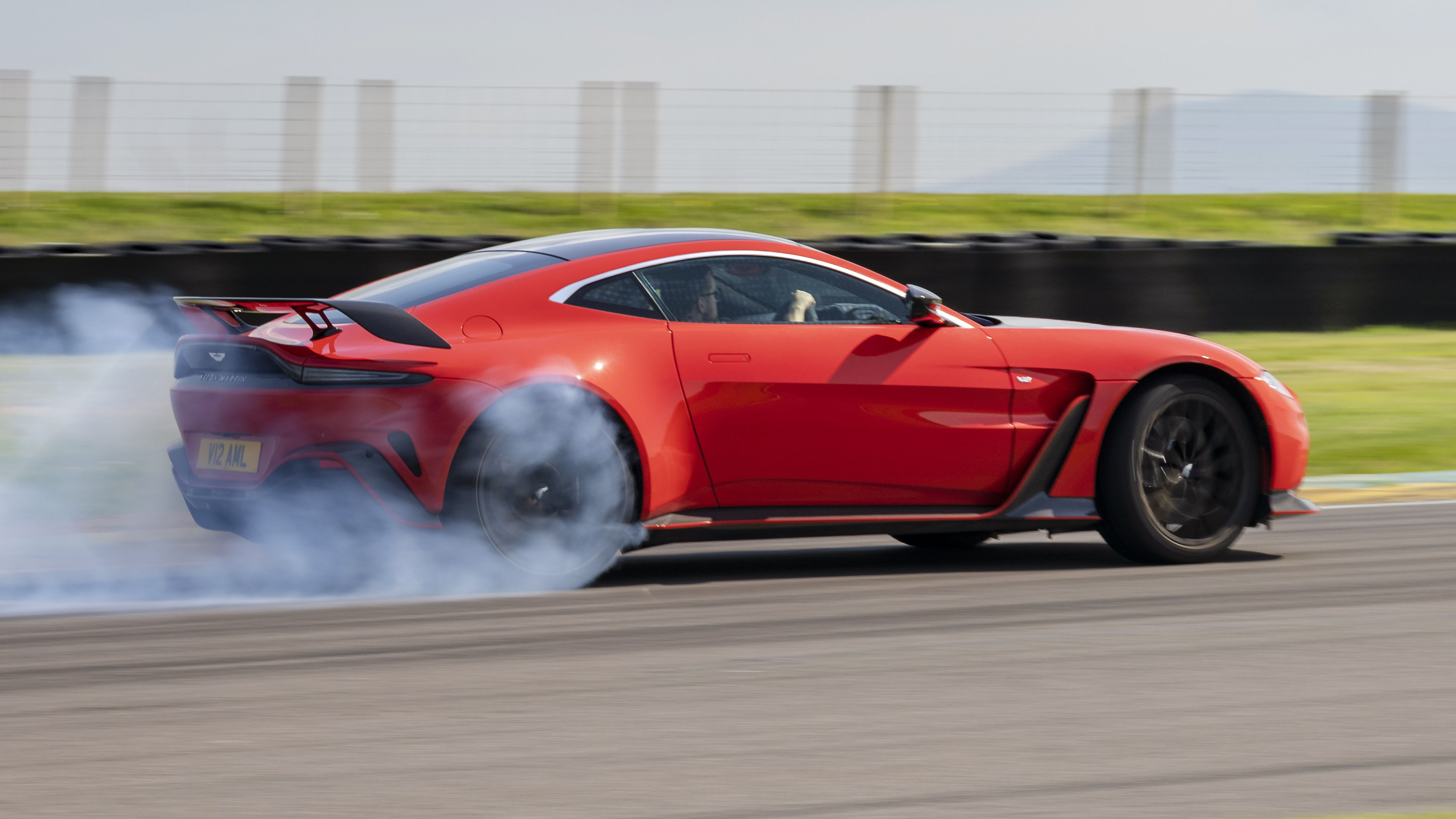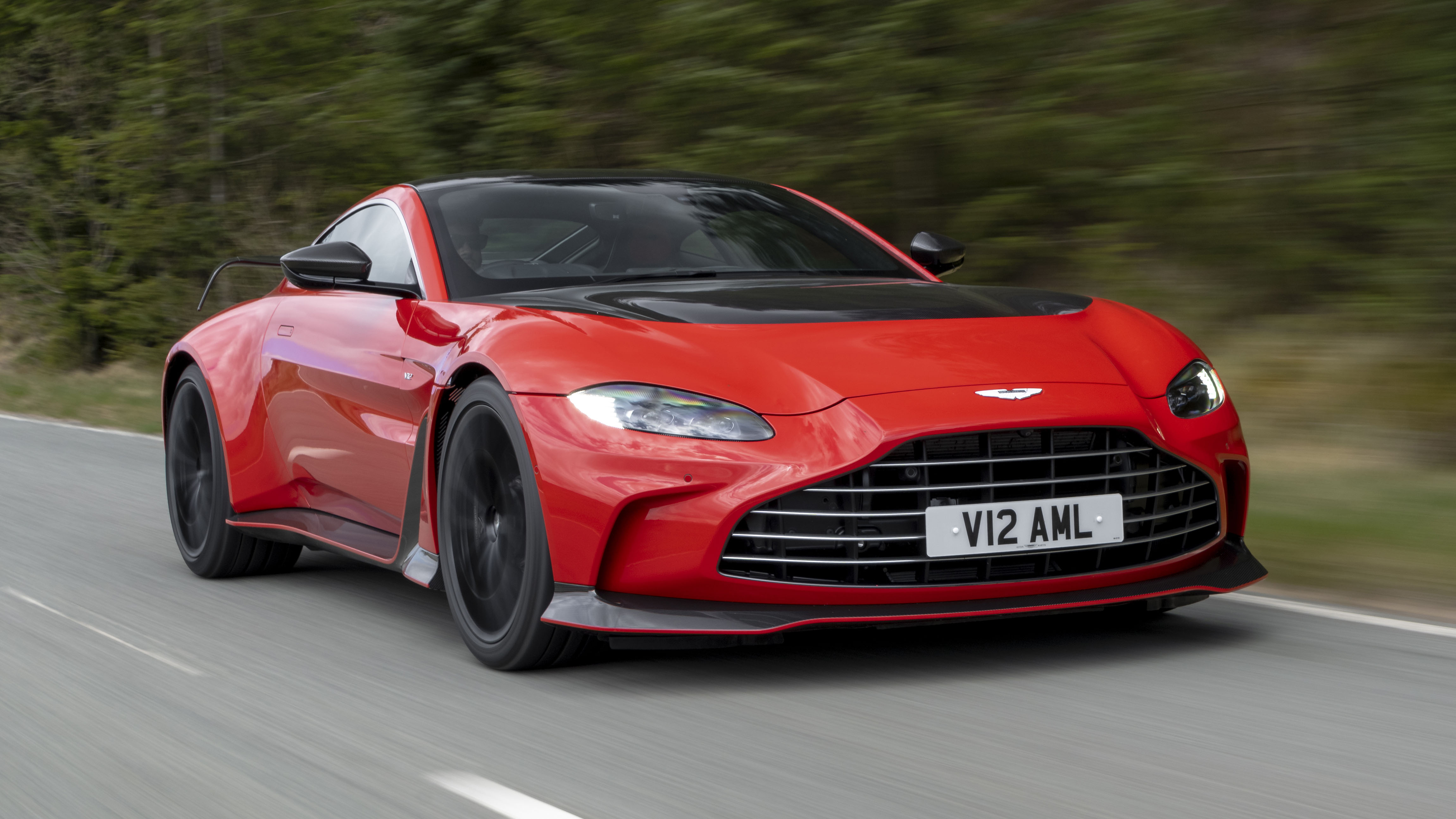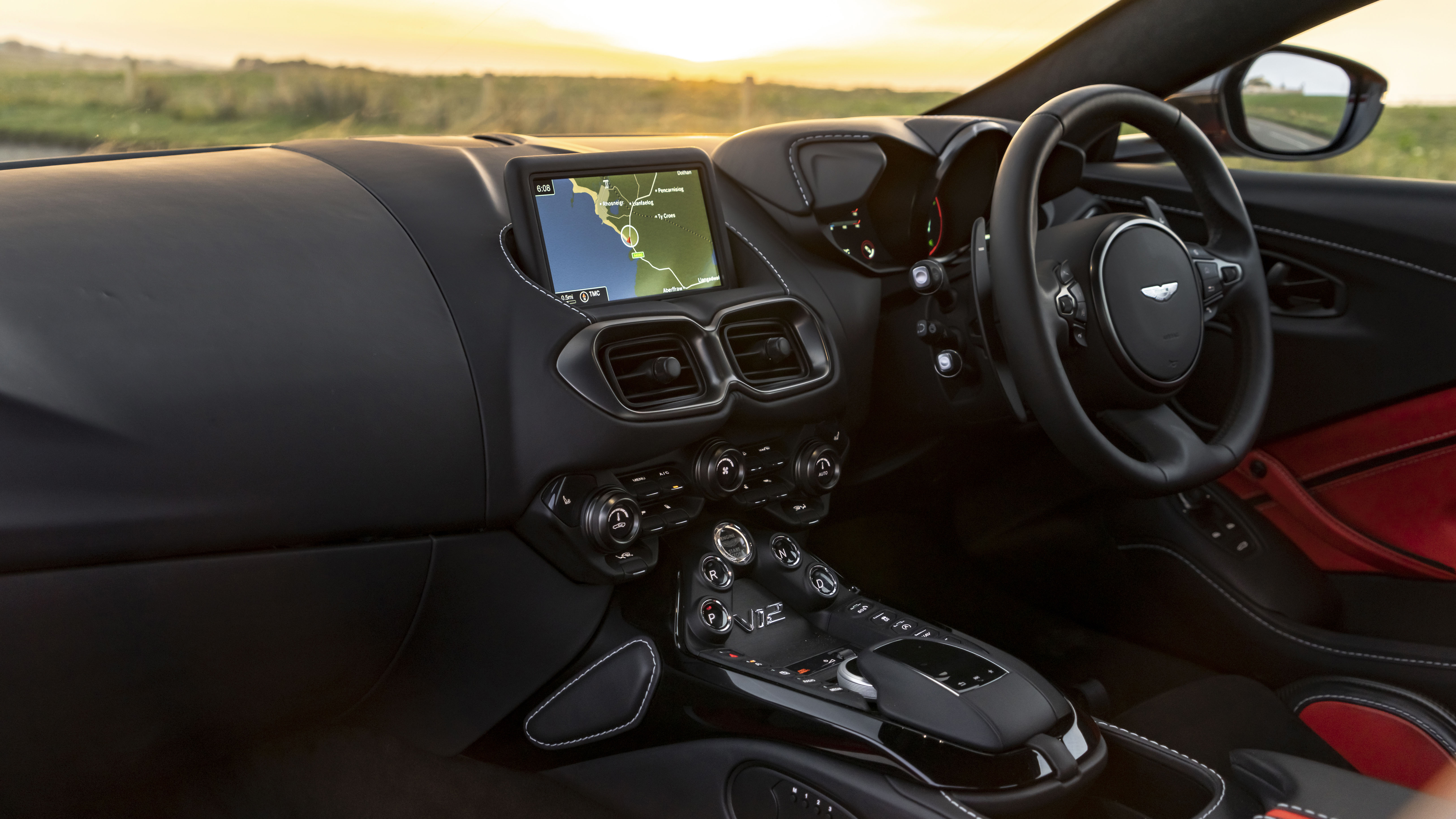
Aston Martin V12 Vantage review
Driving
What is it like to drive?
There’s nothing quite like firing a V12 up from cold, and the Vantage doesn’t disappoint. A long press of the start button and you get a whirr as the fuel pumps take a lungful of juice, and then the engine floods into life like only a V12 can. It’s not the choppy bark of the V8, but something smoother and higher-pitched.
Stab ‘D’ and you’re on the move. The eight-speed ZF auto is clever and deft enough to trawl without any hiccups, no fuss. A bit of pottering for a while to get used to everything and the first impressions are good. The truth is that the V12 is capable of normal use without too much effort. It’s not cosseting, but it’s usable.
Tell me more about the gearbox.
It’s good but not special, dealing with everything without blowing your mind. And after a few hours, you’ll figure out why. The V12 just isn’t as visceral as you want it to be in the way it makes power: it’s a flood of revs that builds as it nears the redline. But the car is a fist of a thing, and feels like it needs something faster-revving, punchier, more aggressive. An engine that attacks from the off, rather than delivering with V12 sophistication.
The V12 is a little lazy, in other words, and a Vantage with this kind of suspension and styling needs something that revs like a chainsaw. As for the noise, it’s really nice, a surging wail that feeds on its own urgency as it gathers. But it won’t make the hairs on the back of your neck stand to attention completely. Maybe it loses some vocal range from the muffling effect of the turbos, but it could have been a little bit naughtier.
That’s a shame. Any driving modes to coax out more personality?
There are three: Sport, Sport+ and Track, and the lower orders are stiff but not uncomfortable. If you look at the specs, it should ride like a marble skateboard; front spring rates are 50 per cent up, rears are 40, there are 13 per cent stiffer top mounts and there’s new bushing and geometry, as well as recalibrated settings for the active dampers and steering to make the car ultra responsive.
Open the boot and there’s even a strut brace that looks like a bit of industrial pipe welded between the rear towers. It’s not pretty, but it shows intention. It hasn’t got the fluency of something from Porsche, and Track mode would struggle with bouncy circuits, never mind the average UK public road, but at least this is where the V12 feels like it’s got a bit of identity. Albeit quite focussed and possibly on drugs.
Go on then, give it some welly.
Go fast and the V12 starts to shine a little bit brighter. There’s that usual Vantage shift as you up the speedometer: what feels dense and a bit heavy, easing up as the speed increases, until you’re driving something that feels largely like a different car. It loses perceived mass in direct relation to how hard you press the accelerator.
It also has a huge amount of grip if you’re not trying to provoke it, sharp steering helping arc the car anywhere you want it. But it’s tough to get the car to stick to a line if there are any bumps anywhere in the vicinity. Even in the softest damper setting, the car will skip, flaring the rear tyres and making you work for every inch.
But the handling is at odds with the engine’s delivery - the V12 takes some time to build and lose its internal momentum, gathers its power and turbo-torque in a measured way. Once it gets going, it is palpably immense. But it doesn’t like losing revs: break traction and you can’t just snap the throttle shut to mitigate the excess, because the engine doesn’t react like a switch. That makes this car better at big bends lived on the edge of grip, rather than the short, sharp shocks of your typical B-road.
TG would very much like to try this car on a big, fast, flowing racetrack to really see what it might be capable of. That might be a very different story.
Featured

Trending this week
- Car Review
BMW iX3






